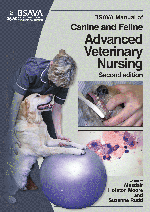
Full text loading...

If fortunate enough to be designing a practice from scratch, the first thing to consider is the layout of space to facilitate safe anaethesia. The mortality rate in veterinary anaesthesia is much higher than in human anaesthesia and when designing a new practice it is important to look at the reasons for this, and how this situation might be improved. It is usually considered that the greatest risk of anaesthesia are during induction and recovery. The chapter considers Equipment; Scavenging; Balanced anaesthesia; Ventilators; and Aids to monitoring.
Advanced anaesthesia and analgesia, Page 1 of 1
< Previous page | Next page > /docserver/preview/fulltext/10.22233/9781905319725/9781905319725.7-1.gif

Full text loading...



















